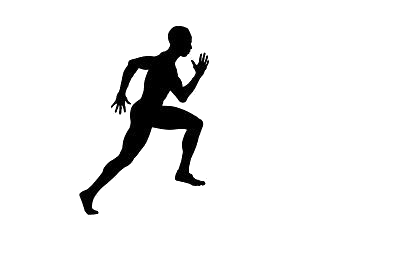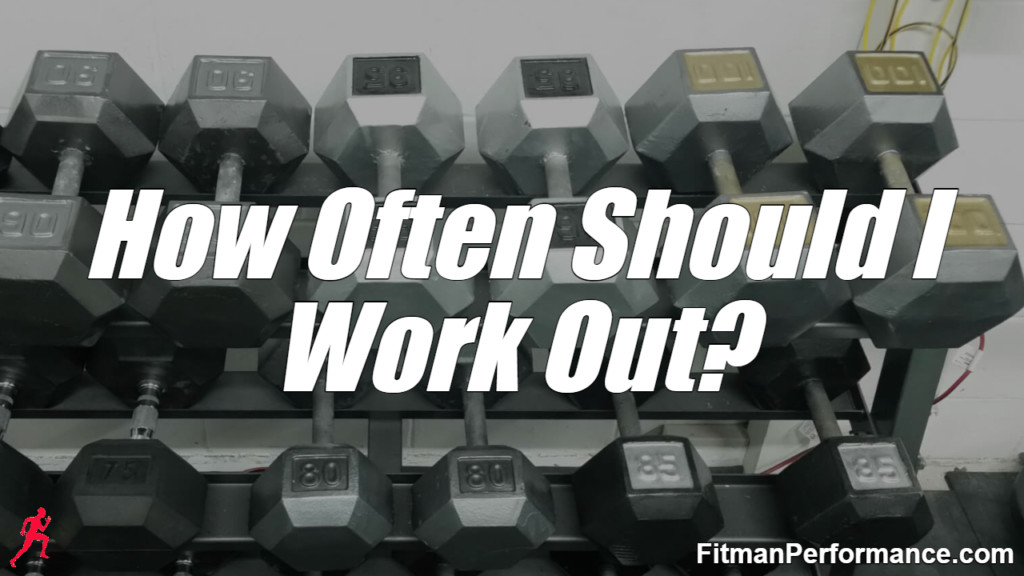“How often and how much should you work out?”
This is a common question that I receive from lifters, athletes, and trainees when they are looking to maximize their results.
Now, there are different training splits that are all based on lifters’ ultimate goals.
Terrell Trackstar is going to have to train at a higher frequency and intensity than Sally Soccermom.
Your results are directly related to how consistent you are with training.
Different Strokes For Different Folks
Some folks think that 1 or 2 days of training per week with a personal trainer will give them Hollywood-like results.
But if you think that you will build a phenomenal physique or become a stud athlete in just 1 or 2 days of training per week, you are crazier than the Joker.
I have experimented with multiple training frequency schedules for myself and my athletes.
The most effective training schedule that I have found for the fastest and most consistent performance and physique gains is the 4-day split.
This does not mean you cannot see progress if you work out 3 days per week, or even 2 days per week if you are a beginner. It just means that 4 days is ideal.
The least most effective training split has you working out 0 days per week.
If you are serious about getting stronger, transforming your physique, and improving your self-confidence, than training 0 days per week is never an option.
You have one body.
Not taking care of your body is criminal. And making excuses as to why you “can’t” workout is the definition of sloth.
Humans are designed to be physically active and work out. We are not supposed to avoid it.
Everything you do bad to yourself will catch up to you without the intervention of the iron, a proper diet, and recovery.
How Often Should I Work Out?
Use this guide below to know what results you will receive from training a certain number of days per week:
0 days per week: Absolutely no value.
1 day per week: Very limited results; no appreciable progress.
2 days per week: Maintenance or deload; beginners can progress on this for a while.
3 days per week: Good for strength, performance, muscle growth, and fat loss; great for recovery and can be used for deload weeks.
4 days per week: Ideal for strength, performance, muscle growth, fat loss and recovery.
5 days per week: Phenomenal for muscle growth and fat loss; overtraining could be a slight concern if your program intensity is not scaled correctly.
6 days per week: Great for fat loss/certain stages of contest prep, but recovery will eventually be compromised and overtraining will happen. Use sparingly or strategically.
7 days per week: Not recommended, and will definitely lead to overtraining as there is no time for recovery of your CNS or your muscles.
Side note: A consistent 3-5 days of training per week is the best overall range for results.
When my athletes come home in the summer for their off-season, they go right to the 4-day split after they take a few days off from their previous season.
The gains they see in the off-season are always ridiculous.
The 4-day split has you training 4 days per week and resting 3 days. This will allow you to get 4 quality training days in without sacrificing much in the way of recovery.
The ideal 4-day training split looks just like the examples below:
4 Day Muscle Building Split A
Sunday: OFF
Monday: Lower Body
Tuesday: Upper Body
Wednesday: OFF
Thursday: Lower Body
Friday: OFF
Saturday: Upper Body
4 Day Muscle Building Split B
Sunday: OFF
Monday: Lower Body
Tuesday: OFF
Wednesday: Upper Body
Thursday: OFF
Friday: Lower Body
Saturday: Upper Body
4 Day Athletic Performance Split A
Sunday: OFF
Monday: Sprints or Jumps and Upper Body
Tuesday: Lower Body
Wednesday: OFF
Thursday: Sprints or Jumps and Upper Body
Friday: OFF
Saturday: Lower Body and Conditioning
4 Day Athletic Performance Split B
Sunday: OFF
Monday: Sprints or Jumps and Upper Body
Tuesday: OFF
Wednesday: Lower Body
Thursday: OFF
Friday: Sprints or Jumps and Upper Body
Saturday: Lower Body and Conditioning
Note: These are general splits, as many athletes have to work out on different days based on their personal life schedule.
The only difference between these splits is that the athlete is going to spend more time working on power by consistently sprinting and jumping.
You do not have to be an athlete to add one day of sprints or jumps to your programs.
I recommend to regular trainees that adding those power movements will allow you to increase your athletic ability.
Just make sure that your first sprint workout is not the 2008 Usain Bolt pre-Olympic workout.
Trying to emulate a world champion when you do not have enough skin in the game is a surefire way to end up in the ER. I’m not coming to see you either.
Other Training Splits
While 4 days per week is definitely the ideal split, there are times when other frequency splits are necessary.
For example, a hard training athlete should definitely deload after 2 or 3 weeks of tough training to let their central nervous system (CNS) recover.
During this deload week, they may only then train 2 or 3 days to facilitate recovery.
When we were building my warehouse gym, I reduced my training days down from 4 days per week to 2-3 days per week.
In order for me to commit time to building my business, my individual training time had to be reduced.
For a lifter who is going on vacation in 3 weeks, I could program them to train 5 days per week for those 3 weeks.
I could do this because it is likely that when they are away, they will not train in the same fashion.
This will allow them to keep those gains while they are in the Bahamas.
Conclusion
Aim to train 4 days per week to reach your goals the fastest, but do not be afraid to reduce the number of days you work out if you have other priorities.
The bottom line is that you want to continue with physical activity, regardless of what else is going on in your life.
Don’t be like many people whose health is way down on the priority list. Many of the ailments people deal with daily are absolutely preventable.
It’s time to get off the couch and take control of your health.
I’ll holla at you next time.
The People’s Trainer,
Fitman



